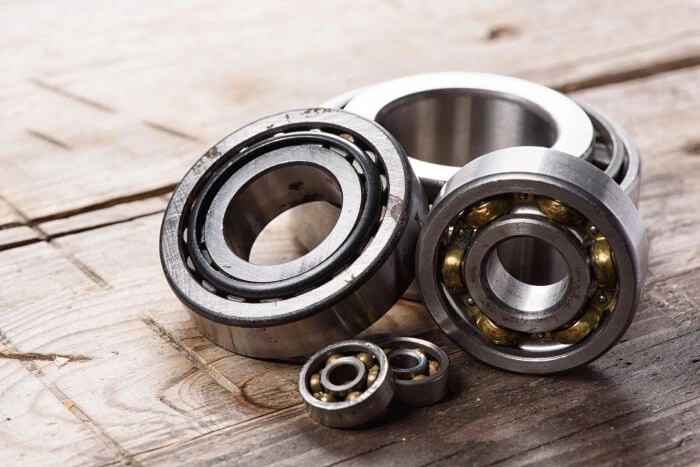A linear guide is a crucial component designed to minimize friction between a rail and a carriage. It employs either ball screws or circular rollers as recirculating elements to reduce the contact surface area along the rail’s length. This design mimics a round shaft linear motion system, enabling smooth movement and minimal resistance between the carriage and the rail. The core principle is to facilitate a rolling motion instead of a sliding contact.
Understanding the Load-Bearing Capabilities of Linear Guides
Load Bearing Purpose
Linear guides are engineered to provide support and manage loads with precision in a specified direction. They are designed to handle axial, radial, and torque forces effectively. The load capacity of linear guide rails is primarily influenced by their size and the surrounding environmental conditions.
A key aspect of linear guide design is the even distribution of load across the tracks and rolling elements. This even distribution is crucial for reducing concentrated weight stress and minimizing the likelihood of premature bearing failure.
Precise Positioning with Linear Guideways
In machine tools, repetitive movements demand precise positioning. Linear guideways are ideally suited for such operations due to their low friction, high rigidity, and exceptional accuracy. These characteristics ensure minimal deviation from the intended path for the load being carried.
Key Components and Construction of a Linear Guide
A linear guide, also known as a linear guideway, is fundamental to various types of machinery. It provides a stable and highly accurate platform for linear motion. The primary components are the rail, carriage, and rolling elements.
Rail or Track
The rail or track serves as the main structural element of the linear guide. Typically constructed from materials like stainless steel or aluminum, it’s chosen for its robustness and ability to maintain rigidity and durability. Rails come in various profiles—square, round, and rectangular—to accommodate different weights and application requirements. The length of the rail can also be customized to meet specific travel distance needs.
Carriage or Sliders
Carriages, also known as sliders, are the moving parts of the linear guide system that glide along the rails. They house the rolling elements and act as a mounting platform for the loads being moved. Carriages are designed to uniformly carry a broad range of weights, depending on the specific application and requirements. They come in different configurations, such as block or flange-style, to suit diverse applications. Some carriages include dust seals or wipers to protect the rails from contaminants.
Rolling Elements in Linear Rails
To minimize contact area and ensure smooth movement between the carriage and rail, linear guides incorporate recirculating rolling elements. These elements reduce friction and wear. There are several types of rolling elements used in linear guides:
1) Ball Bearings
Small steel balls are positioned between the carriage and rail surfaces. These bearings are well-suited for high-speed applications with low to moderate weight loads.
2) Roller Bearings
Roller bearings utilize tapered or cylindrical rollers instead of balls, allowing them to handle heavier loads and are ideal for heavy-duty applications. They excel in scenarios where radial loads are the primary concern.
3) Needle Bearings
Needle bearings are compact and suitable for applications requiring high radial load capacity in limited spaces. Their rolling elements are cylindrical rollers resembling tiny needles, designed to manage loads with a high length-to-diameter ratio.
Types of Linear Guides and Their Applications
Different linear guides are designed to meet specific application requirements, often constructed from materials like stainless steel or aluminum, based on environmental conditions, mounting requirements, and the specific application. Here are some common types of linear guides and their typical uses:
1) Profile Rail Guides
Profile rail guides consist of precision-ground rails and ball-bearing or roller-bearing carriages. They are used in applications demanding high stiffness, precision, and substantial weight capacity.
2) Ball Bearing Linear Guides
Ball bearing linear guides are versatile and used in high-speed machining centers, aerospace systems, and robotics due to their smooth, low-friction motion. They are suitable for 3D printers, medical devices, CNC machines, and transportation systems.
3) Roller Bearing Linear Guides
Roller bearings handle heavier loads than ball bearings, making them ideal for large machine tools, automation equipment, and material handling systems.
4) Needle Roller Linear Guides
With a compact design and high radial weight capacity, needle rollers are used in small linear stages, positioning tables, and precision instruments where space is limited.
5) Slide Linear Guides
Slide guides are compact and suitable for environments requiring high precision in limited spaces, commonly used in electronic equipment, optical instruments, and small-scale positioning systems.
Choosing the Right Linear Guide for Your Application
Selecting the appropriate linear guide is critical for the performance and longevity of your equipment. A thorough understanding of the available options and careful decision-making are essential to ensure your machines operate seamlessly. Linear guides are pivotal in facilitating precise linear motion.
